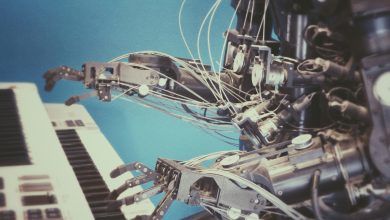
“Vibe coding.” The phrase alone sounds like something you’d hear at a hackathon after midnight. Equal parts ambitious, chaotic, and possibly powered by too much caffeine. But it’s not just a meme anymore, people are starting to take it seriously.
In tech circles, vibe coding loosely refers to using AI tools to write code based entirely on natural language prompts. Just describe what you want (like a button that emails your boss when clicked) and the AI takes it from there. No syntax. No IDE fiddling. No actual coding. Just…vibes.
The idea hit the mainstream when OpenAI co-founder Andrej Karpathy tweeted in early 2025 about a vision for software development where you “forget the code even exists” and fully “give in to the vibes.” But here’s the million-dollar question: Is this the future of development or just another overhyped trend?
Let’s unpack what vibe coding is, where it actually works, and why it’s not replacing your developers anytime soon.
What is Vibe Coding, Really?
At its core, vibe coding is shorthand for AI-assisted programming driven by natural language. Think of it as telling an AI what you want your software to do without actually writing the code yourself.
Instead of typing out functions and logic, you write prompts like:
- “Make a signup form with email and password validation.”
- “Generate a Python script that scrapes this site every hour.”
- “Create a dashboard with charts for monthly revenue.”
The AI translates those prompts into working code. You then (ideally) test, debug, and refine what it spits out.
It sounds magical. And for certain tasks, it kind of is. But let’s not confuse magic tricks with commercial-grade, consumer-ready software.
The Tools Powering the Vibes
Several AI tools are at the heart of vibe coding:
- ChatGPT (OpenAI): One of the most popular options, ChatGPT can generate code, help debug, and answer “what does this do?” questions like a super helpful (but sometimes overconfident) junior dev.
- Cursor (by Anysphere): Designed to assist developers, Cursor combines an AI chat assistant with IDE features to let you describe functionality and iterate on AI-generated code right inside your workflow.
- GitHub Copilot: Integrated directly into IDEs like VS Code, Copilot suggests code snippets as you type and includes a chat-based assistant for answering questions, refactoring, or even automating entire tasks in Agent Mode.
- Anthropic’s Model Context Protocol (MCP): A protocol that helps connect AI assistants with real-world data and workflows, making it easier to embed LLMs into dev environments.
These tools aren’t fringe. They’re powerful, and developers are absolutely using them. To be clear, these tools provide enormous value, but the leap from “AI-assisted coding” to “AI replaces developers” is a bit like assuming a self-checkout machine can run a grocery store.
Why Vibe Coding Is Not Sustainable
Here’s the truth: vibe coding is fun. And, in some cases, AI-assistants are genuinely helpful. But is it real?
Well, it’s real in the same way that developers were talking about working two full-time, high-paying jobs during the pandemic. Some people did do that. Most didn’t. It took social media by storm because it struck the right balance of tech hype and controversiality.
Now, people claim they are vibe coding entire software products. Sure, some people are. But is it effective or sustainable? Not really.
Put another way: Would you ask ChatGPT to generate a house blueprint and directions to build the house, then move your family into said house? Probably not without double checking the architectural diagrams by an engineer, getting the plans approved by the city, and doing a lot of your own research.
With vibe coding, you are effectively letting AI design and build your house, then moving your family in and hoping it won’t collapse during a storm.
The same goes for AI-generated code:
- It doesn’t scale. Once you get beyond a few thousand lines of code, things fall apart. AI often produces repetitive, brittle code that can’t adapt to evolving requirements.
- It skips the hard stuff. Architecture, scalability, maintainability, security, compliance – none of these are solved by vibe coding. You still need experienced engineers to think critically about how systems fit together.
- It opens critical security vulnerabilities. If you don’t know what vulnerabilities to look out for, AI won’t patch those holes.
- It invites tech debt. AI can write something that “works,” but without best practices, you’re left with a codebase that’s hard to test, extend, or trust.
- It slows you down in the long run. AI can get you started fast, but reviewing, debugging, and rewriting subpar code often takes longer than just doing it right the first time.
In short: AI can write code, but it doesn’t understand software.
Proper Use of Vibe Coding Tools
Is there a place for AI in software development?
Absolutely. But not as a solo act.
Think of AI as a power tool. It makes your skilled workers faster and more efficient, but it doesn’t replace the need for skilled workers. In the hands of an experienced developer, AI tools like ChatGPT or GitHub Copilot can:
- Eliminate boilerplate
- Speed up prototyping
- Help explore alternate solutions
- Automate tedious debugging
The key is how they’re used. When integrated thoughtfully into development workflows, with human oversight, they can boost productivity and even encourage innovation.
But using AI tools without understanding what’s happening under the hood? That’s not automation. That’s outsourcing your thinking.
Final Thoughts
Vibe coding, as it stands today, is a blend of meme and method. It’s useful for prototypes or getting a head start but it’s no substitute for an experienced development team.
If you’re a CEO, product owner, or decision-maker wondering whether AI can replace your developers, not yet. Maybe not ever. At the rate that AI is progressing, there’s no certainty except this: the future of software development will include AI, but it’ll be alongside people not instead of them.
Let your team “catch the vibe” as long as they keep doing the work.




